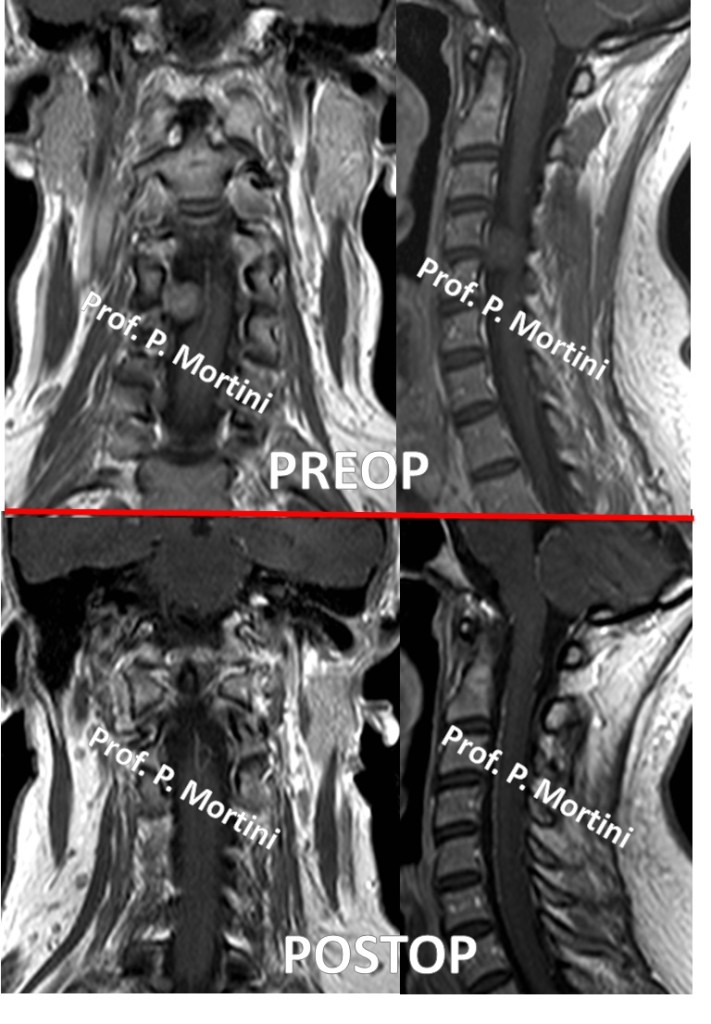These are benign, slow-growing nerve tumors, similar to schwannomas. They commonly occur in patients who suffer from neurofibromatosis, a genetic disorder resulting in multiple tumors throughout the body.They can occasionally occur in patients without this genetic abnormality.
Cutaneous neurofibromas grow along small branches of nerves under the skin of patients with neurofibromatosis. They may present as painful lumps under the skin. They are not associated with large nerves, and are easily removed.
Larger neurofibromas tend to grow within large, important nerves. Unlike schwannomas, however, they are more intimately intertwined with the nerve fibers, making removal more difficult. Nevertheless, with meticulous surgical technique, these difficult tumors may be safely removed, causing few if any deficits.
When a neurofibroma involves a particularly long segment of nerve or nerves, it is called a plexiform neurofibroma. These are generally impossible to remove without removing the entire nerve, necessarily causing a major neurological deficit. Therefore, these variants are not usually subjected to surgery.
A small percentage of plexiform neurofibromas change from benign to malignant, and can spread to other parts of the body. These cancers are almost uniformly lethal without aggressive treatment. If a plexiform neurofibroma becomes exceptionally painful and/or begins to rapidly expand, this suggests it has become cancerous, and it must be definitively treated.
 English
English Italiano
Italiano